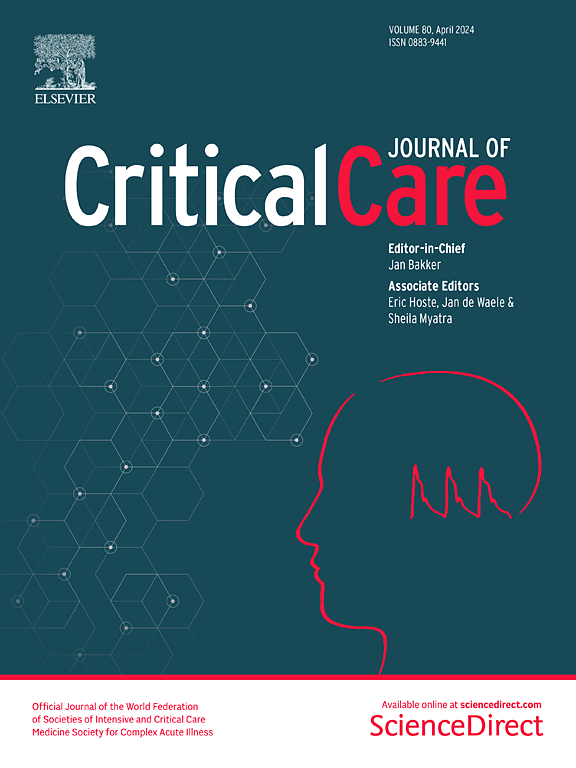Pressure support, patient effort and tidal volume: a conceptual model for a non linear interaction
IF 8.8
1区 医学
Q1 CRITICAL CARE MEDICINE
引用次数: 0
Abstract
Pressure support ventilation (PSV) is a form of assisted ventilation which has become frequently used, with the aim of partially unloading the patient’s inspiratory muscles. Both under- and over-assistance should be avoided to target a lung- and diaphragm- protective ventilation. Herein, we propose a conceptual model, supported by actual data, to describe how patient and ventilator share the generation of tidal volume (Vt) in PSV and how respiratory system compliance (Crs) affects this interaction. We describe the presence of a patient-specific range of PSV levels, within which the inspiratory effort (Pmus) is modulated, keeping Vt relatively steady on a desired value (Vttarget). This range of assistance may be considered the “adequate PSV assistance” required by the patient, while higher and lower levels may result in over- and under-assistance respectively. As we also show, the determinants of over- and under- assistance borders depend on the combination of Crs and the inspiratory effort which the patient is able to sustain over a period of time. These concepts can be applied at the bedside to understand if the level of assistance is adequate to patient’s demand, focusing on the variation of relevant parameters (Vt, Pmus and pressure-muscle-index) as patient reaction to a change in the level of assistance.压力支持、患者用力和潮气量:非线性相互作用的概念模型
压力支持通气(PSV)是一种常用的辅助通气方式,旨在部分减轻患者吸气肌肉的负担。为了达到保护肺部和横膈膜的通气效果,应避免过低或过高的阻力。在此,我们提出了一个有实际数据支持的概念模型,以描述患者和呼吸机如何在 PSV 中共同产生潮气量(Vt),以及呼吸系统顺应性(Crs)如何影响这种相互作用。我们描述了患者特定 PSV 水平范围的存在,在此范围内,吸气努力(Pmus)受到调节,使 Vt 相对稳定在期望值(Vttarget)上。这一辅助范围可被视为患者所需的 "足够 PSV 辅助",而较高和较低的辅助水平可能分别导致辅助过度和辅助不足。正如我们所展示的那样,决定助力过大和助力不足边界的因素取决于 Crs 和患者在一段时间内所能承受的吸气努力的组合。这些概念可应用于床边,以了解辅助水平是否足以满足患者的需求,重点关注相关参数(Vt、Pmus 和压力-肌肉-指数)的变化,作为患者对辅助水平变化的反应。
本文章由计算机程序翻译,如有差异,请以英文原文为准。
求助全文
约1分钟内获得全文
求助全文
来源期刊

Critical Care
医学-危重病医学
CiteScore
20.60
自引率
3.30%
发文量
348
审稿时长
1.5 months
期刊介绍:
Critical Care is an esteemed international medical journal that undergoes a rigorous peer-review process to maintain its high quality standards. Its primary objective is to enhance the healthcare services offered to critically ill patients. To achieve this, the journal focuses on gathering, exchanging, disseminating, and endorsing evidence-based information that is highly relevant to intensivists. By doing so, Critical Care seeks to provide a thorough and inclusive examination of the intensive care field.
 求助内容:
求助内容: 应助结果提醒方式:
应助结果提醒方式:


